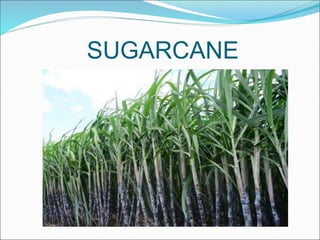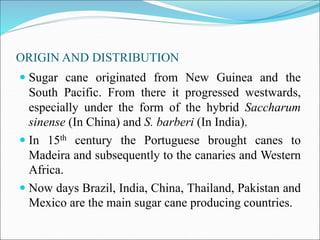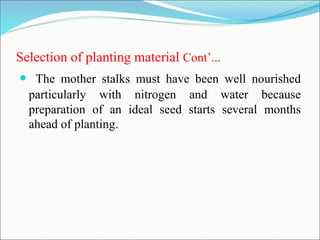Sugarcane is a perennial grass grown for its stalks which contain high levels of sucrose. It thrives in tropical climates and provides over 50% of the world's sugar. The document discusses the botany, cultivation practices, pests and diseases, harvesting, and post-harvest handling of sugarcane. Key points include that it is propagated through cuttings, requires warm humid climates, and must be quickly processed after harvesting to prevent sugar losses.


































